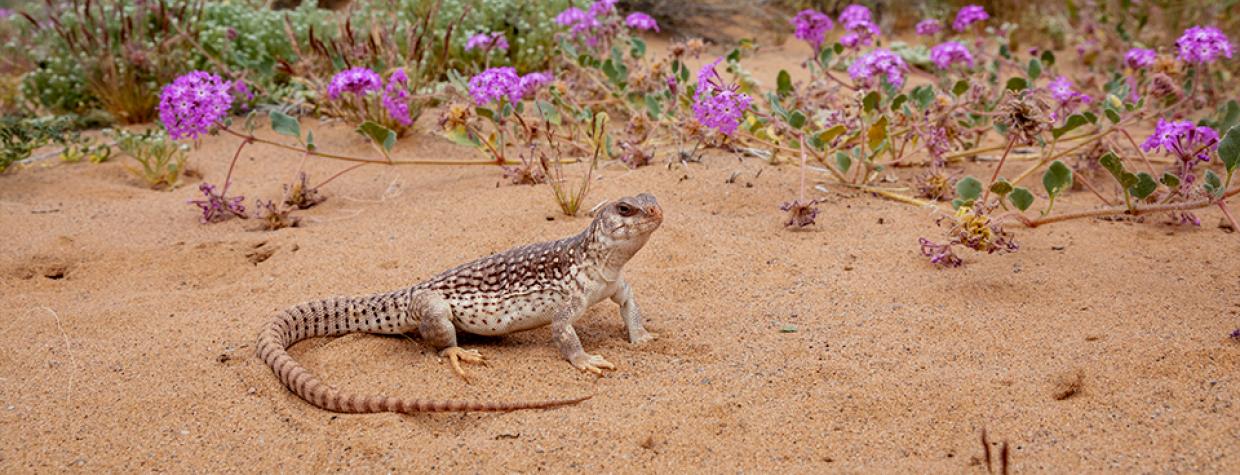The scientific name for the desert iguana — Dipsosaurus dorsalis — is going to make you think you’re looking at a dinosaur, and it’s easy to imagine this species being a descendant of the great reptiles of epochs past.
Today, though, you’ll find the chunky lizards all across the Sonoran and Mojave deserts of the Southwest, including on certain islands in the Gulf of California. Although they spend most of their time on shrubby, sandy terrain, they’re capable of climbing into creosote and will often burrow beneath the bushes. Males tend to have red markings near their tails but are otherwise similar in appearance to females. And they can stand the heat: The lizards are most active in temperatures of up to 115 degrees, but they chill out when temps drop into the double digits. This one was photographed in an area of sand dunes near Parker in Western Arizona.

